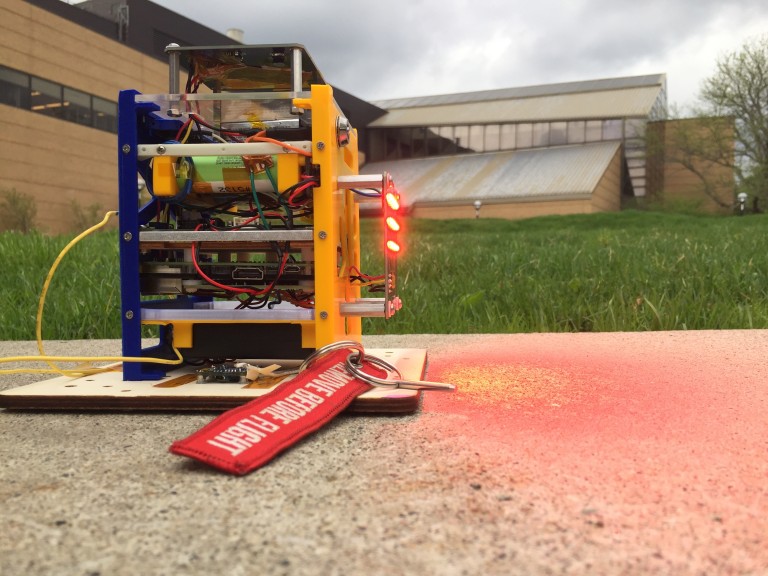By Matthew Szczerba.
The thirty-first flight of MXL’s Strato high-altitude ballooning project launched from a skatepark in Marshall, MI at 10:47 pm local time on May 10, 2018. The mission, called Strato LITE (LED Initial Testing Experiment), carried two prototype LED panels for MXL’s next CubeSat candidate, PHAROS (Phased-Array Optical Satellite). The LED boards, blinking in a distinct pattern, were carried by a CubeSat-like structure that included a Raspberry Pi microcontroller, accelerometers, rotation rate gyros, a GPS receiver, an APRS transmitter, a magnetometer and two GoPro cameras, all attached to a baseplate with four large booms to help dynamically stabilize the platform.
As the balloon ascended to its maximum altitude of 100,200 feet, telescopes in the Angel Hall observatory at the University of Michigan’s Central Campus tracked the balloon and took 80 GB of image data that will be used to determine if the chosen LEDs are suitable for use on a CubeSat mission, and to verify mathematical models of how the optical signals from the LEDs change as they pass through the atmosphere.
The team successfully recovered the payload near Dundee, MI at 1:56 AM local time with moderate structural damage but minimal damage to the electronics. After repairs and improvements, the team hopes to fly the mission a second time in the fall of 2018 to verify their results and collect better data.
Some members of the team will be traveling to Los Angeles, CA to present their findings at the 42nd COSPAR Scientific Assembly this summer and to look for funding partners to help enable a more advanced version of the payload on PHAROS.



